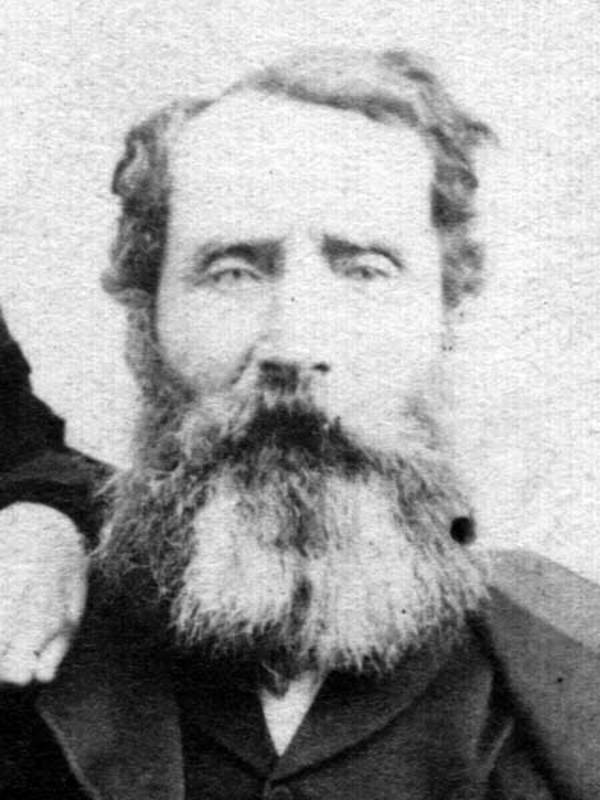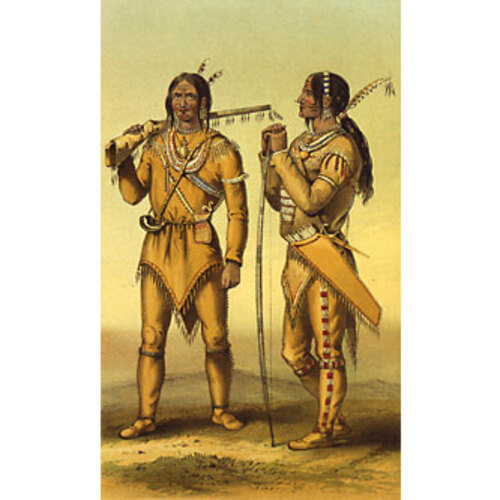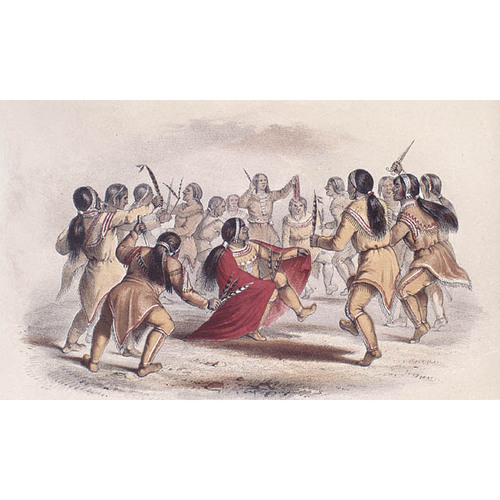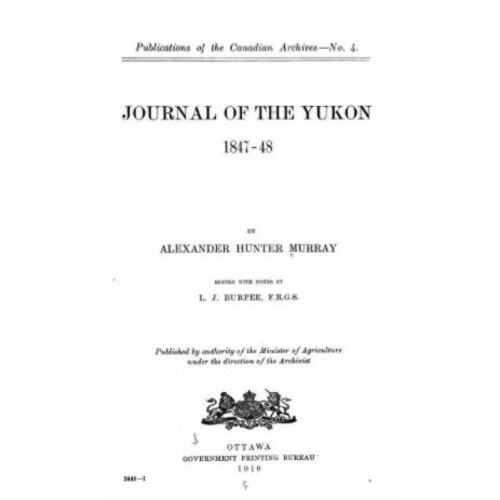
Source: Link
MURRAY, ALEXANDER HUNTER, HBC chief trader and artist; b. in 1818 or 1819 at Kilmun, county of Argyll, Scotland; d. on 20 April 1874 at his home near Lower Fort Garry, Man.
No fur-trader ranged farther over North America than Alexander Hunter Murray. According to his Journal of 1847–48 he had early been in the swamps of Lake Pontchartrain (near New Orleans, La.) and along the Red River in Texas. It is difficult to determine exactly how or when he got there and nothing much is known about his life until he became an employee of the American Fur Company working out of St Louis, Mo. In 1844–45 he was on the upper Missouri River and there he sketched the fur posts of that region: forts Union, Pierre, Mortimer, and George.
Murray left the American Fur Company in 1846 and proceeded north to join the Hudson’s Bay Company at Fort Garry (Winnipeg). Because of his experience he was appointed senior clerk and transferred to the Mackenzie River District under the chief factor Murdoch McPherson. On his way there he met Chief Trader Colin Campbell* of the Athabasca District, whose daughter Anne he shortly married at Fort Simpson. Since there was no clergyman in the area, “McPherson and a Bible” had to serve and the marriage was registered at St John’s Cathedral, Red River, on 24 Aug. 1846. The couple descended the Mackenzie River to the mouth of the Peel River, then went to Fort McPherson for the winter.
On 11 June 1847, after leaving his bride at Lapierre House on Bell River, Murray started out to establish Fort Yukon, the assignment for which he is chiefly known. Descending the Bell River to the Porcupine, Murray reached the Yukon River on 25 June and soon began construction just above the junction of the Yukon and Porcupine rivers, at a point slightly north of the Arctic Circle. The fort consisted of three large log structures surrounded by a stockade 100 feet square with a bastion at each corner. Murray and the leaders of the HBC seem to have known that the fort was inside Russian territory, contrary to an agreement between the HBC and the Russian-American Company. As a result, Murray feared an attack by the Russians, but Fort Yukon was beyond the sphere of their trading activity and no Russian made an appearance at the post until 1863, by which time Murray was serving elsewhere. In effect, Murray and the HBC developed and exploited an area where they had no right to be, and this occupation of a profitable territory continued until 1869 when the HBC was peremptorily ejected from Fort Yukon by the United States after the American purchase of Alaska. Their main trade was in marten pelts, but they also took out beaver, fox, and otter.
During the winter of 1847–48, Murray occupied himself with work on the fort buildings, and acquainted himself with the Kutchin or Yukonikhotana Indians who inhabited the area around the fort. He kept a daily journal of his activities which has been published by the Public Archives of Canada along with his sketches of the area and its people. On 5 June 1848, with the returns of the season, he set out for Lapierre House to rejoin his wife; later that year the couple returned to Fort Yukon where Murray was in charge until 1851. A letter from Chief Factor John Rae* to HBC Governor Sir George Simpson* dated 30 Aug. 1850 commented, “Mr. Murray is evidently an excellent manager and an interested person, but unfortunately his men will not stay any length of time with him.” Simpson wrote Rae the following 10 December, “I have read a letter from Mr. Murray who gives a great deal of interesting information. . . . [From] his correspondence and the activity with which he conducts the affairs of that section of the business, I should judge him to be a very efficient and intelligent officer.” However, by 1851 Murray’s health was failing and he had to be relieved of his duties.
After a rest at Fort Garry with his wife and several small children, he was assigned to the post at Pembina and was in charge there for several years. Later he served at Rainy Lake and Swan River before being returned to Pembina where he was advanced to chief trader in 1856. Murray went home to Scotland on furlough in 1857, evidently partly for his health. Fully recovered, he returned to the Red River Settlement and was placed in charge of Lower Fort Garry where he remained until his retirement in 1867. From then until his death in 1874, he lived at his home, Bellevue, on the Red River.
Murray was a man of varied accomplishments. His sketches of fur trade posts and of people give an interesting picture of the times, and his Journal of the Yukon, 1847–48 provides valuable insights into the manners and customs of the Indians of the Yukon, the difficulties of establishing a post, and the policies and methods of the fur trade.
HBC Arch. B.240/a/1–8 (Murray’s journal at Fort Yukon). Murray, Journal of the Yukon (Burpee). HBRS, XVI (Rich and Johnson). J. S. Galbraith, The Hudson’s Bay Company as an imperial factor, 1821–1869 (Toronto, 1957). Richard Mathews, The Yukon (New York, 1968). J. E. Sunder, The fur trade on the upper Missouri, 1840–1865 (Norman, Okla., 1965). M. M. Black, “Alexander Hunter Murray,” Beaver, outfit 265 (June 1934), 29–32. Robert Watson, “Chief trader Alexander Hunter Murray and Fort Youcon,” Beaver, outfit 260 (June 1929), 211–13. Clifford Wilson, “Founding Fort Yukon,” Beaver, outfit 278 (June 1947), 38–43.
Cite This Article
Kenneth L. Holmes, “MURRAY, ALEXANDER HUNTER,” in Dictionary of Canadian Biography, vol. 10, University of Toronto/Université Laval, 2003–, accessed December 20, 2025, https://www.biographi.ca/en/bio/murray_alexander_hunter_10E.html.
The citation above shows the format for footnotes and endnotes according to the Chicago manual of style (16th edition). Information to be used in other citation formats:
| Permalink: | https://www.biographi.ca/en/bio/murray_alexander_hunter_10E.html |
| Author of Article: | Kenneth L. Holmes |
| Title of Article: | MURRAY, ALEXANDER HUNTER |
| Publication Name: | Dictionary of Canadian Biography, vol. 10 |
| Publisher: | University of Toronto/Université Laval |
| Year of publication: | 1972 |
| Year of revision: | 1972 |
| Access Date: | December 20, 2025 |






